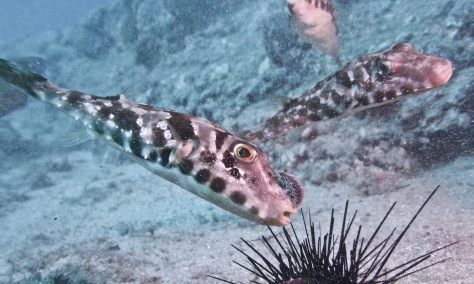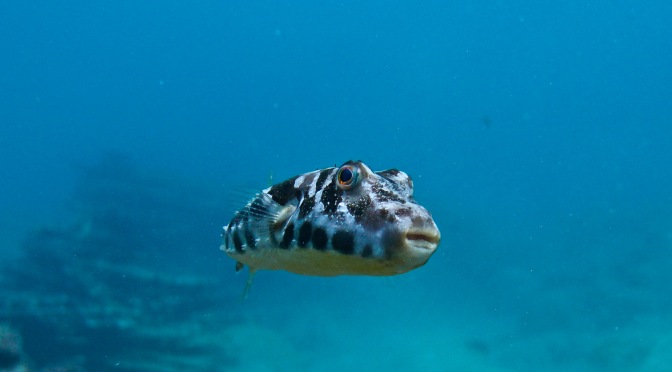The Bandtail Puffer are with their cute face one of the most toxic fishes that we can find in the waters of Atlantic. The poison existing in this fish by the presence of tetrodotoxin and saxitoxin which are found in their skin, viscera and gonads. They can as their other members in their family puff up them self as an defense if the deadly poison is not enough.
This nasty little critters are mostly found in shallow waters but are as well documented to been sighted as far as 45 meters. They prefer staying at reefs and seagrass where they hide and haunting for their favourite food. Ranging from crustaceans, mollusks polychaetes, plants and even living fish heads by there own family members.
These little sea monsters reaching an not to impressing size of 30 cm. But what to become impressed of is that they manage to spread their cuteness globally from Canary island, Central América, United States and even so far as Haiti.
They are extremely cute and that would proberly be the reason why it is the most common fish that people have in their aquariums. It’s tough to be that cute…
Extremely cute monsters aren’t they?











